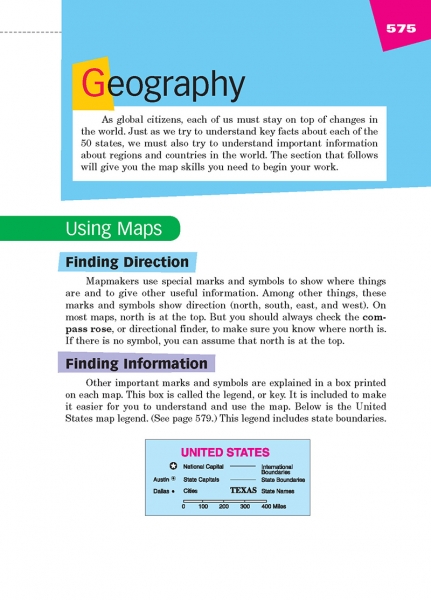Page 575 from

Start-Up Activity
Ask your students, "Where are you?" They will probably look puzzled and may haltingly offer answers: "Right here," "In English class," "In the high school." Press them to become more precise. They might indicate which desk in which row in what room of what high school in what city in what state in what country they live. Keep pressing them until they reach a global perspective.
Then tell students to open to page 575 in their handbooks. On it and the pages that follow, they will gain a broader perspective of their world. Teach them about finding direction and information on maps, and continue your instruction on page 576. Then let them know that you will ask them to closely study each map on the following pages and will prompt them to think more deeply about their world. (Whatever time you spend on these activities will reap dividends in student learning in all classes. It will help them become citizens not just of your town, state, or nation, but also of the world at large.)
Think About It
“Wars of nations are fought to change maps. But wars of poverty are fought to map change.”
—Muhammad Ali

Start-Up Activity
Ask your students, "Where are you?" They will probably look puzzled and may haltingly offer answers: "Right here," "In English class," "In the high school." Press them to become more precise. They might indicate which desk in which row in what room of what high school in what city in what state in what country they live. Keep pressing them until they reach a global perspective.
Then tell students to open to page 575 in their handbooks. On it and the pages that follow, they will gain a broader perspective of their world. Teach them about finding direction and information on maps, and continue your instruction on page 576. Then let them know that you will ask them to closely study each map on the following pages and will prompt them to think more deeply about their world. (Whatever time you spend on these activities will reap dividends in student learning in all classes. It will help them become citizens not just of your town, state, or nation, but also of the world at large.)
Think About It
“Wars of nations are fought to change maps. But wars of poverty are fought to map change.”
—Muhammad Ali